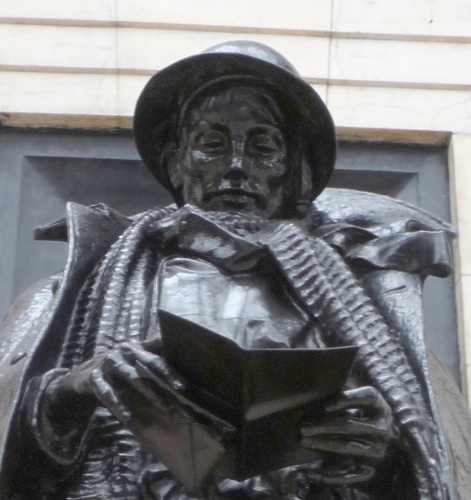Remembrance
This page includes a selection of examples of how schools have recognised and commemorated soldiers who were killed or wounded at Gallipoli. Many of our projects have involved remembrance in one form or another – see for example eulogies read at gravesides or local remembrance events. Search ‘Remembrance’ at the top of the page for more examples.
Here, a student reads the text from Ataturk’s famous speech on the memorial at Ari Burnu, Gallipoli.
The First World War centenary project Letter to an Unknown Soldier shows one idea for Remembrance activities. In London’s Paddington station is a memorial to Great Western Railway staff who were killed in the war. It shows a soldier reading a letter. The project encouraged people to write their own letters to this unknown soldier or another one of their choice, and over 20,000 were received. You can search for letters by particular authors and we have selected a few of the best:
- Lee Child describes what happened in the years after the war.
- Vanessa Gebbie writes about all the generations which came after his death.
- Dafydd Williams sent a poem about ‘the boots of the unknown soldier’, in memory of his great uncles who fought at Gallipoli.
- Andrew Carter writes about whistles – in railway stations and in the trenches.
- Gill Hawkes was brought up in Ypres, where her great-grandfather, grandfather and father tended the war cemeteries. ‘Remembering is the easy part’ she says.
- Nathalie Stocks, aged 14, writes a letter to her own father who was killed a few months ago in Afghanistan.
- Owen Sheers writes as the child who never lived because this soldier was killed.
